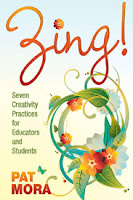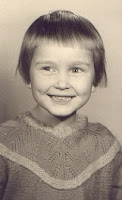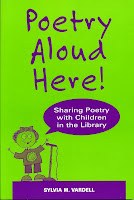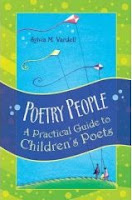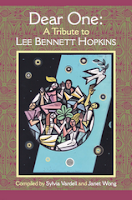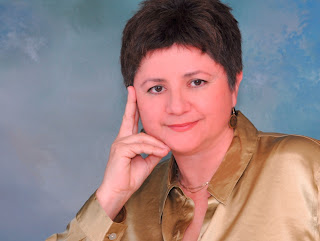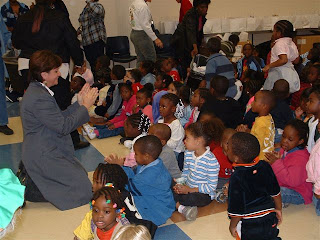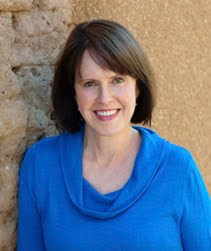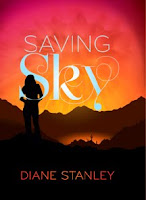What a pleasure to introduce my talented Santa Fe friend Diane Stanley who generously agreed to share her reflections on creativity. Do visit her new website and do enjoy her new book Saving Sky.
An Introduction
DS: I’m an author and illustrator of children’s books. I’ve been exploring ideas in words and pictures for over thirty years. My newest book, a middle-grade novel called SAVING SKY, is my fifty-first.
1. Do you think of yourself as creative?
DS: Yes and no. I’m very much the product of two quite different parents and those differences work in tandem in my personality.
My mother came from a long line of extremely creative people. They were always telling stories, making art, and doing craftsy things. Mostly they did these things for their own pleasure, but my mother was a professional writer and a veritable idea factory. After her death I remember going through the papers in her office, deciding what to keep and what to throw away. I found file after file of ideas for books, magazine articles, projects. Mostly they never got off the ground—she was probably too busy coming up with even more new ideas to put any of them into action. I draw from Mother’s line of creativity, but I’m not wildly inventive as she was. I have to work at it.
My father, on the other hand, was a math major, a navy pilot, a careful, precise, orderly person. Like him, I’m meticulous, methodical, and tidy.
Those two sides of my nature have proved to be a good mix—more creative than my father, more diligent than my mother, I combine inventiveness with craft. My orderly life enables me to act on ideas when they come to me.
2. How do you nurture your creativity?
DS: As I said earlier, I work at it. If I’m writing a novel, I spend a lot of time actively thinking about my characters, about what’s going to happen in the next chapter, about the overarching theme of the book. I think about these things as I lie in bed at night drifting off to sleep, or while I’m driving, or taking a shower.
I actively seek new ideas from the world around me—newspaper articles, radio interviews, personal stories can all spark something in my imagination. Anything that strikes me as interesting is run through a mental filter: can I use this in a book?

I do a lot of research, looking for rich and wonderful details that will make my settings and backgrounds more accurate and interesting. But I find inspiration there, too. A description I read of how very public death was in the Middle Ages, particularly for great personages, led to a chapter in THE SILVER BOWL: The king is brought into the great hall, carried in on a litter by his gentlemen. All the people “in his hand” have been called there, so that he can say his farewells to them, and acknowledge his heir, and say his last words to his lady wife, and urge his knights to swear an oath of peace. The image of that vast room, with tapestries hanging on the stone walls, a vaulted ceiling overhead, dimly lit by torches and candles, filled with anxious people, still rumpled from having been awakened in the night—all of that came to me from some fairly dry description of medieval customs.
3. What are your challenges in your creativity practices?
DS: My greatest challenge is carving out the time for deep concentration. It’s not that I procrastinate or have trouble finding motivation. I feel drawn to my office and my work. Often I go in and sit down at my computer in the morning—just for a little while—and at ten or eleven I’m still there, in my robe and slippers, working. If I wake early, 5:30 or 6:00, I don’t continue to lie there, hoping to drift off again. I get up and savor some quiet writing time while the sky slowly brightens.
But there are all these other things that tend to get in the way.
My mental image of a normal day, my intention, is to be at my desk, showered and dressed, by 8:30 or 9:00. I work, stopping only for a quick lunch, pretty much all day. At 5:30 or 6:00 I’m finished for the day and go into the kitchen to start dinner. This “normal day” rarely happens, of course. There are the dental appointments, haircuts, grocery store runs. There’s the email and the phone calls.
Writers also have to promote their books—visiting schools, giving interviews, writing articles, posting on social media, filling out questionnaires for the marketing department, updating web sites, blogging. All those things are work-related, but they aren’t the real work itself.
These distractions chop up the day, interrupting the flow of ideas and concentration. I am hardly alone in this. I suspect all authors and artists struggle with it. If they’re wise, they probably ignore the emails, let the answering machine take the call, put a sign on the door saying not to interrupt unless bombs are falling or blood is flowing. I’ve never been able to do that.
4. Do you have a space that helps you be more creative?
DS: Yes. My beautiful office, with windows overlooking my garden, a wooded hillside filled with piñon and ponderosa pines, and beyond that, in the far distance, the Sandia Mountains. My children are grown, so when my husband leaves for work it’s quiet and peaceful in the house. My room is all set up as a refuge for me, with a comfortable chair, a nice big computer screen, art and books all around me. I sit in there with endless cups of tea, soaking in the silence, thinking and writing.
 |
| “Just one of many scenes around Santa Fe that feed my spirit. Living in a beautiful place, feeling close to nature, enriches my creativity, too.” |
5. In what ways does creativity shape your work and your life?
DS: It’s essential to my life. There have been times when I’ve wished I had more time for my other interests—hiking, traveling, skiing, gardening, reading—and looked around at my friends, many of whom are retired, and wondered . . . But I know I could never retire. I could no more stop creating than I could give up eating and sleeping. It’s part of who I am. It’s possible that if I’d started down a different path in my life, never becoming a published author, never forming the habit of daily creative work, I wouldn’t have missed it. I’d have found outlets for my creativity through other things, as my aunt and grandmother did. But once the natural impulse to create becomes your profession, something you sit down and actively do every day, there’s no turning back. It becomes like a seed that is planted and nurtured, fed and watered and given a sunny spot in the garden: it will grow and grow; winter might knock it back, but in the spring fresh green shoots will start pushing up under the snow. Creativity is for life.

